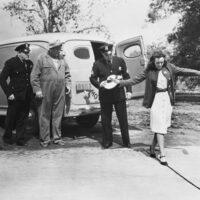Understanding Roadside Sobriety Tests

Police officers administer numerous types of roadside sobriety tests, but only three are officially authorized by the National Highway Traffic Safety Administration (NHTSA). Those are the Horizontal Gaze Nystagmus, the walk and turn, and the one-legged stand.
Unlike breathalyzer testing, you have a right to refuse roadside sobriety tests. This is because they give false positives in numerous situations. For example, someone with knee issues may fare poorly on the one-legged stand.
Below, we’ll discuss the top three field sobriety tests and how they work.
The Horizontal Gaze Nystagmus
The horizontal gaze nystagmus test is when your eye jerks involuntarily. This can happen naturally, but the response is exaggerated when someone is under the influence of drugs or alcohol. The officer will use a light or a pen and ask you to follow it with your eyes. Someone who is impaired by drugs or alcohol may have difficulty tracking the moving object. The officer administering the test will likely be looking for three red flags:
- The eyes jerk when they attempt to follow the moving object
- The eyes jerk when the move as far to the side as possible
- The eyes jerk when moved less than 45 degrees
This test is considered the most accurate, but it could also be an indication of another medical condition. Also, police officers don’t always run the test properly. A qualified DUI attorney can successfully challenge the results of this highly subjective test.
The Walk-and-Turn
For this test, the driver will be asked to take nine steps heel-to-toe in a straight line and then turn on one foot and walk back the same way in the opposite direction. For this test, the officer is looking for any of these seven signs of impairment:
- The driver cannot maintain balance while performing the test
- The driver stops to regain balance while walking
- The driver cannot keep their balance while listening to the instructions
- The driver does not touch heel-to-toe
- The driver uses arms to balance
- The driver loses balance while turning
- The driver does not take the correct number of steps
Any one of these can be an indication that the driver is under the influence of drugs or alcohol. But it can also be an indication that they have pain in their ankle or knee. This again, is a highly subjective test that relies on the officer’s observations.
The One-Legged Stand
The driver is asked to stand with one foot about 6 inches off the ground and counts out loud by thousands until he is told to put his foot down. The officer generally times the test for 30 seconds and looks for four signs of impairment:
- The driver is swaying while balancing
- The driver is using their arms to balance
- The driver is hopping
- The driver puts their foot down
While these could be a sign that the driver is intoxicated, they can also be a sign of several other potential things including a knee injury.
Call a Port St. Lucie DUI Attorney Today
Eighmie Law Firm represents the interests of those who have been charged with DUI in Port St. Lucie. Call our Port St. Lucie criminal lawyers today to schedule an appointment and we can begin discussing your options immediately.


